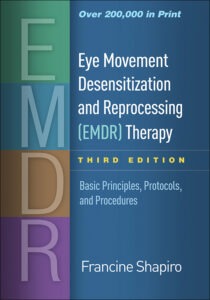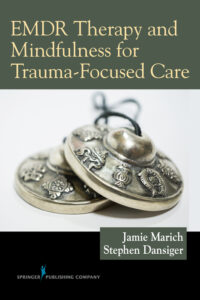The effectiveness of EMDR therapy delivered via an e-Health platform in the treatment of complex sexual abuse utilizing the ‘Abate Abuse’ protocol (EMDR Europe Conference)
Conference presentation reviewing the effectiveness of EMDR Therapy delivered online in treatment of sexual abuse using Abate Abuse Protocol.
Read MoreEye movement desensitization and reprocessing (EMDR) therapy as a treatment for depression (Kansas State University)
Thesis examining the efficacy of EMDR therapy as a treatment for unipolar depression. Results provide preliminary evidence of efficacy.
Read MoreEye Movement Desensitization and Reprocessing Therapy: Basic Principles, Protocols, and Procedures (Guilford, 2018)
This fundamental text by EMDR founder Francine Shapiro outlines the basic principles, protocols and procedures of EMDR therapy.
Read MoreA five-day inpatient EMDR treatment programme for PTSD: Pilot study (European Journal of Psychotraumatology)
Preliminary effectiveness of an intensive five-day inpatient treatment with EMDR and trauma-informed yoga for patients with PTSD.
Read MoreEmotionally focused therapy and eye movement desensitization and reprocessing: An integrated treatment to heal the trauma of infidelity (Couple and Family Psychology: Research and Practice)
Emotionally focused therapy (EFT) and EMDR were utilized conjointly as a means to heal trauma related to infidelity in couple therapy.
Read MoreEMDR therapy and mindfulness for trauma-focused care (Springer, 2018)
The book demonstrates how clinicians can conceptualize and deliver trauma-focused care in both mental health and addiction treatment.
Read MoreThe Role of Slow Wave Sleep in Memory Pathophysiology: Focus on Post-traumatic Stress Disorder and Eye Movement Desensitization and Reprocessing (Frontiers in Psychology)
At a neurobiological level, memories recorded during extreme stressful situations cause maximal amygdalar synapses, storing the events.
Read MoreEye Movement Desensitization and Reprocessing and Slow Wave Sleep: A Putative Mechanism of Action (Frontiers in Psychology)
The slow wave sleep hypothesis tries to explain how EMDR works and is discussed in light of other theories and neurobiological findings.
Read MoreThe effect of EMDR and CBT on low self-esteem in a general psychiatric population: A randomized controlled trial (Frontiers in Psychology)
Study investigating effectiveness of EMDR and CBT in enhancing self-esteem in a general psychiatric secondary health care population.
Read MoreAuditory and visual memories in PTSD patients targeted with eye movement and counting: The effect of modality-specific loading of working memory (Frontiers in Psychology)
This study tested whether auditory memories can be targeted with EMDR in PTSD patients and whether taxing the patient (performing a dual task while recalling a memory) in a modality specific way (auditory demanding for auditory memories and visually demanding for visual memories) was more effective in reducing the emotionality experienced than taxing in cross-modality.
Read MoreThe effectiveness of eye movement desensitization and reprocessing integrative group protocol with adolescent survivors of the central Italy earthquake (Frontiers in Psychology)
Study evaluating the use of EMDR Integrative Group Treatment Protocol on adolescents after the earthquake in Central Italy on 24 August 2016.
Read More





